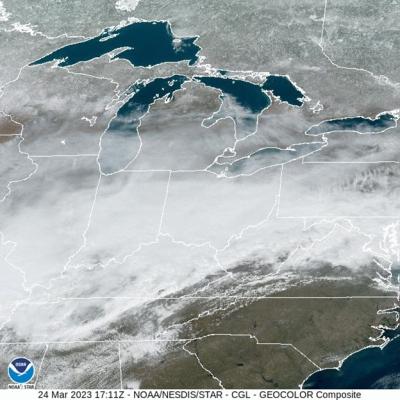Moisture Sources for Great Lakes Region Precipitation: Climatology and Recent Changes
In the Great Lakes region (GLR), precipitation is an essential component of the net basin supply that drives lake water levels. Understanding the hydrological cycle and moisture sources is crucial to comprehending the historical hydroclimate and projecting future changes. Researchers quantified the moisture sources of the GLR and examined recent changes in the amount of moisture from each region. They found that the Great Plains (GPs) and GLR are the major moisture sources for precipitation that falls in the GLR. Moisture from the GPs contributes to more than 40% of strong precipitation in the GLR. The moisture contribution from the Mid-Pacific to precipitation in the GLR has a statistically significant increasing trend in spring.
The Great Lakes are the world’s largest freshwater lakes. They provide water for many purposes, including drinking, irrigation, shipping, ecological habitats, hydroelectric power generation, and recreation. Understanding the hydroclimate over the GLR is essential because the lakes impact physical, ecological, economic, and cultural environments across North America. Variations in Great Lakes water levels can be attributed to changes in regional precipitation, overlake evaporation, lake interflows, and water withdrawal. Comprehending the hydrological cycle and precipitation moisture sources is crucial for learning about the historical hydroclimate and projecting future changes in the water level of the Great Lakes.
Researchers quantified the moisture contribution to precipitation over the GLR from different geographic locations. They used the Dynamic Recycling Model (DRM) with various reanalysis/analysis products to provide robust results. The DRM is a two-dimensional semi-Lagrangian analytical model that can quantify source regions of moisture on a daily basis. The results show that the GPs and GLR are the major sources of moisture for the precipitation that falls in the GLR. Moisture from the GPs contributes more to heavy precipitation, while moisture from the GLR contributes more to light precipitation. Research also found a statistically significant (p < 0.05) increasing trend in the moisture contribution from the Mid-Pacific due to an intensified zonal moisture transport from the Mid-Pacific caused by changes in atmospheric circulation.

